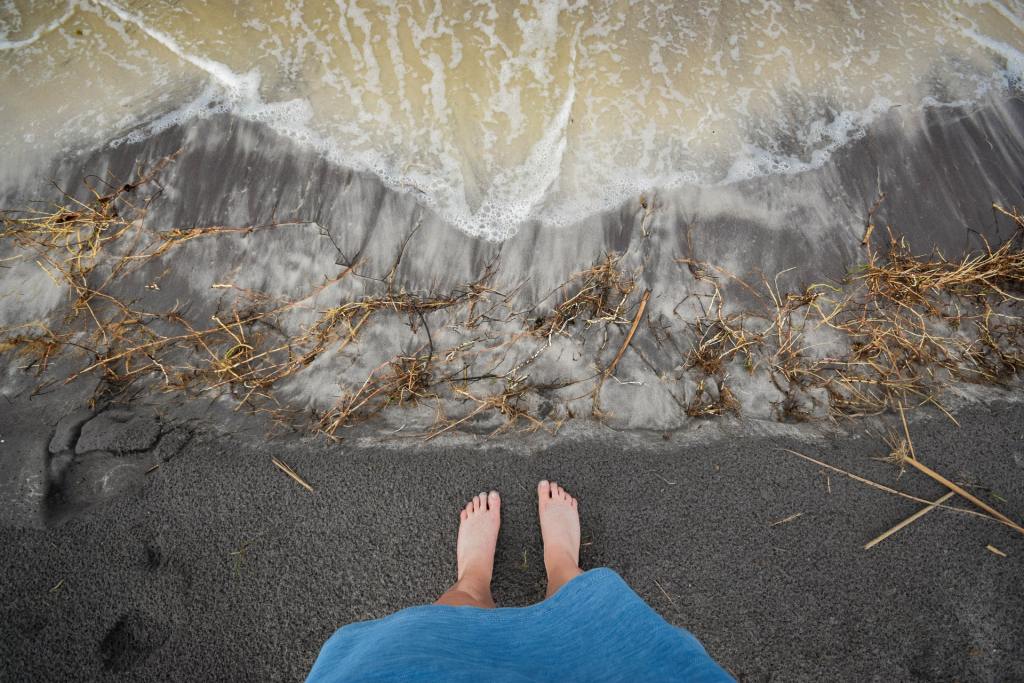FAR North Queenslanders are being urged to take care with flooded water and mud, following a spike in soil and water-borne disease cases across the region with two deaths and four cases requiring intensive care.
Recently, Cairns based Tropical Public Health Services has received increased notifications of melioidosis and leptospirosis.
TPHS Cairns Public Health Medical Officer, Dr Annie Preston-Thomas said while there were usually more cases of both infections during the wet season and first months of the year, this year the average amount of cases had nearly doubled.
“There have been 17 cases of melioidosis across the Cairns and Hinterland region since the start of January, including two deaths and four people requiring intensive care management,” she said.
“Most of these cases occurred in people aged 40-75 years of age living in Cairns.
“There have also been 25 cases of leptospirosis in the region since the start of the year, with most occurring in the Cassowary Coast and Tablelands areas.”

About the Water-Borne Diseases
Dr Preston-Thomas said both melioidosis and leptospirosis were potentially fatal bacterial diseases, found in contaminated water and soil, with their outbreaks documented worldwide following extreme weather events.
“Melioidosis is caused by the bacterium Burkholderia pseudomallei, which is typically found in muddy surface waters,” she said.
Leptospirosis is caused by bacteria of the genus Leptospira, which has >250 known pathogenic serovars. Leptospira colonise the kidneys of infected mammals and are released through urine into the environment, where they can survive for weeks. Humans become infected through direct contact with infected animals, including rodents, wildlife, livestock, and pets, or contact with soil or water contaminated by the urine of infected animals. Risk factors for infection depend on interactions between humans, animals and the environment. Globally, leptospirosis is an emerging infectious disease with a rising incidence, increasing frequency and severity of outbreaks, and evolving climatic, sociodemographic and environmental drivers of transmission. Recently, unprecedented outbreaks have occurred as a result of the combined forces of climate change, flooding, population growth, urbanisation (typically associated with poverty and slums in developing countries), and agricultural intensification to meet the increasing demands for food. (Source / Australian Journal of General Practice )
“Most infections occur when skin abrasions or wounds come into contact with wet soil or water contaminated with the organism.”
Symptoms of acute melioidosis include fever, cough and difficulty breathing.
Sometimes the disease may present as superficial skin infection or abscesses. It always requires hospitalisation and intravenous antibiotics.
Melioidosis can sometimes have a long incubation period and present months or years after exposure.
Dr Preston-Thomas said leptospirosis occurred throughout mainland Australia but was more common in the tropics, especially after flooding.
“It is caused by the bacteria Leptospira which is passed from animals to people,” she said.
“Although it can be passed directly from animals, it is usually transmitted to people by skin or mucous membrane contact with urine of infected animals, which may be in water, moist soil or vegetation.
“There are many different types and they are widespread in the natural environment.
“Animals which may be infected with Leptospira include cattle, pigs, dogs, horses, rats, mice and native animals such as bandicoots.
Some people are at increased occupational risk in northern Queensland, such as cane cutters, banana growers and dairy farmers.
Others may be exposed through outdoor sports such as swimming, wading or white-water rafting in contaminated areas.
TPHS Cairns Public Health Medical Officer, Dr Annie Preston-Thomas
In Australia, occupational exposure is the predominant source of infection, particularly in livestock and dairy farmers, abattoir and meat workers, and banana workers (through exposure to rodents). Infection through recreational exposure is also common, mostly from white water rafting, kayaking, ecotourism and other outdoor activities. International travel, particularly to tropical, developing countries, is an important source of occupational and recreational exposure. (Source / Australian Journal of General Practice )
Symptoms and Treatment of Leptospirosis
Symptoms of leptospirosis may include fever, severe headache, muscle aches, vomiting and red/ bloodshot eyes.
There may also be cough, abdominal pain and/ or a rash.
People can become severely unwell with involvement of their lungs, liver, kidneys, heart and brain.
How To Minimise Your Risk
Dr Preston-Thomas said that while there is a vaccination for leptospirosis that works in domestic animals, there is no vaccine for melioidosis or leptospirosis that works in people, but there were simple steps everyone could follow to prevent their risk of infection.
These include:
• Wear protective footwear; avoid walking barefoot on muddy surfaces or in muddy water, particularly if you have cuts or abrasions on your feet or legs
• Wear gloves while working in the garden, farm etc
• Wash hands before eating
• Cover cuts and sores with waterproof dressings
• Wash thoroughly (preferably shower) after exposure to soil or muddy water, and after working outdoors
• Diabetics should maintain good foot care, with help from a podiatrist if necessary • Avoiding hazardous alcohol use
• To prevent leptospirosis, also clean up rubbish, long grass, food scraps and junk to keep rodents away





